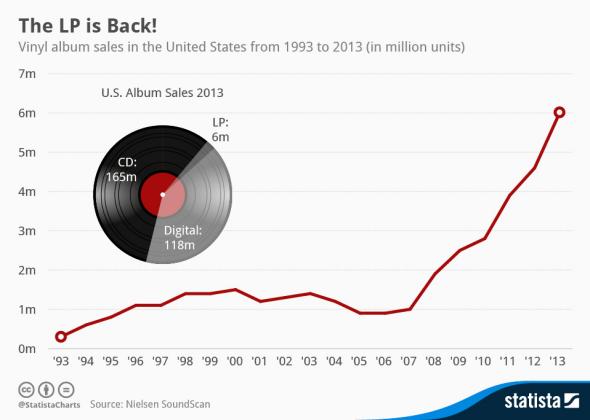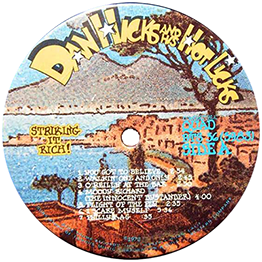the styus follows every wiggle
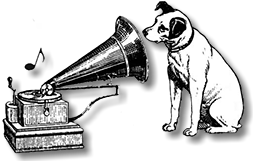

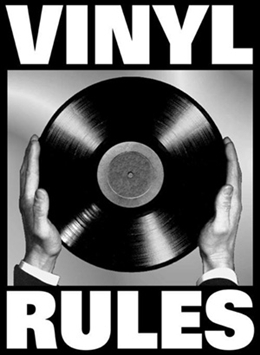


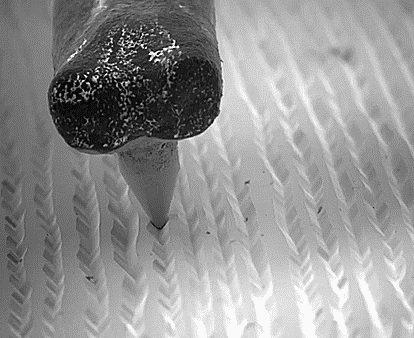
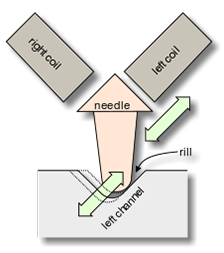
electrical pulses, left and right.
THE VINYL STORY
In the world of recorded sound first there was the cylinder made of wax and later, tinfoil. Next came the platter, or phonograph record, a stiff, delicate, breakable disc spinning at 78 revolutions per minute (rpm). On each side is a single groove, cut as a spiral, about 1,401 feet long that plays about two-and-a-half minutes of sound.
The surface of a record originally was shellac, a resin secreted by the female lac bug on trees in the forests of India and Thailand. It is processed and sold as dry flakes and dissolved in alcohol to make liquid shellac. Shellac is very hard, when you carve a tiny wiggle into a groove, it stays there. But shellac had problems, it cracked easier than a teenage ego and it was abrasive and therefore noisy.
The phonograph disc record was the primary medium used for music reproduction throughout the 20th century. In the late 1940s, a great leap forward in convenience of use and quality of sound arrived with the advent of the LP, or long-playing record. The 331/3 rpm LP format was developed by Columbia Records and marketed in June 1948.The new product was a 12- or 10-inch, fine-grooved disc made of polyvinyl chloride, or “pvc”. Its groove is played with a smaller-tipped stylus at a speed of 331⁄3 rpm.
In its native form pvc is white and brittle but becomes flexible with the addition of plasticizers and can be any color. Vinyl records may be scratched or warped if stored incorrectly but if they are not exposed to high heat, carelessly handled or broken, a vinyl record has the potential to last for centuries.
The large cover and the inner sleeves of the 12” LP are ideal for creative artistic works that represented the band and its music while at the same time promoting the album. The small jewel box case for a compact disc simply does not have the same artistic impact.
Each side of a 12-inch LP could play for more than 20 minutes, much more than the older 78-rpm version. At last, a long piece of music could be put complete on one side of the record. The way was paved for Sgt. Pepper and his Lonely Hearts Club Band.
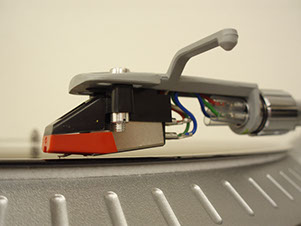
tone arm & to the preamp
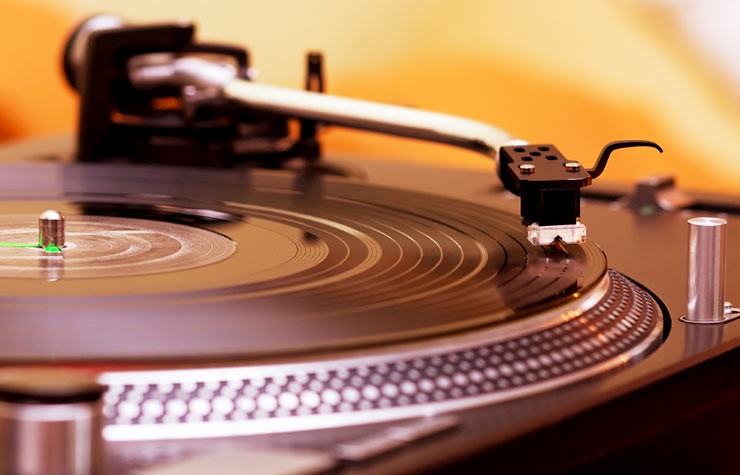
exactly at 33 1/3 rpm.
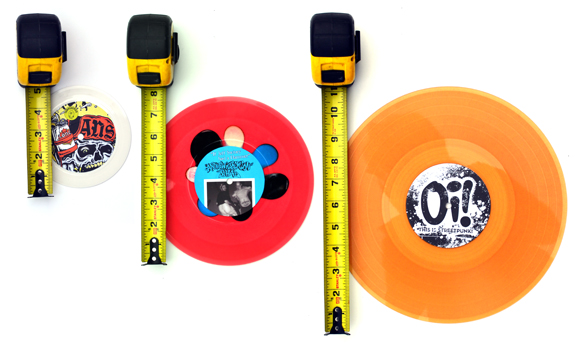
in diameter, a 45 is 7", and an LP is 12".
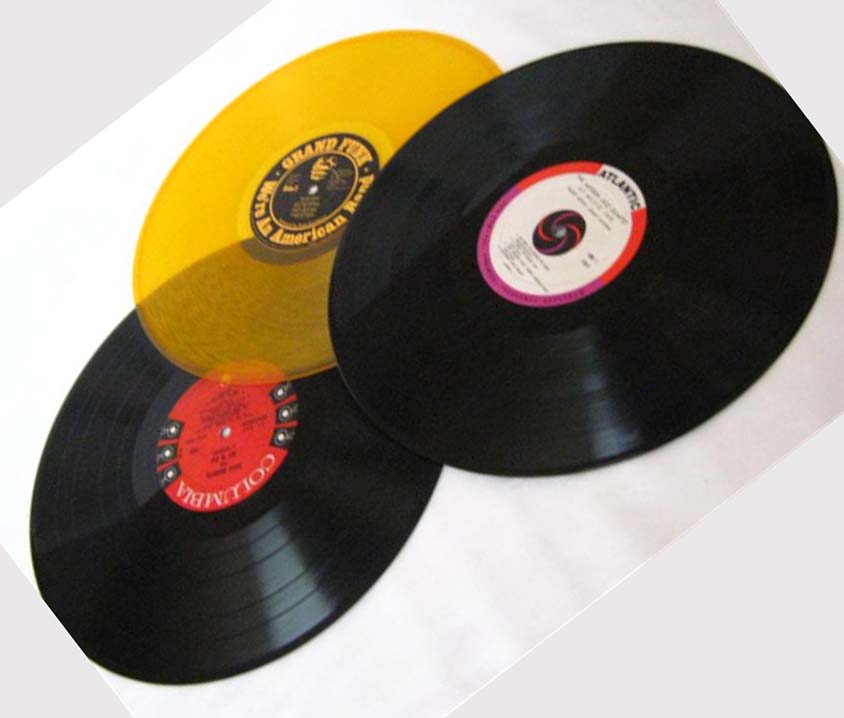
transparent or tie-dye
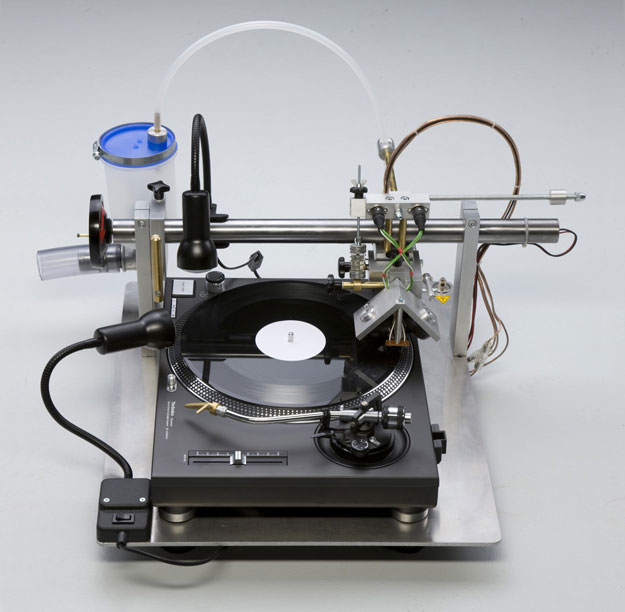
makes a vinyl "master".
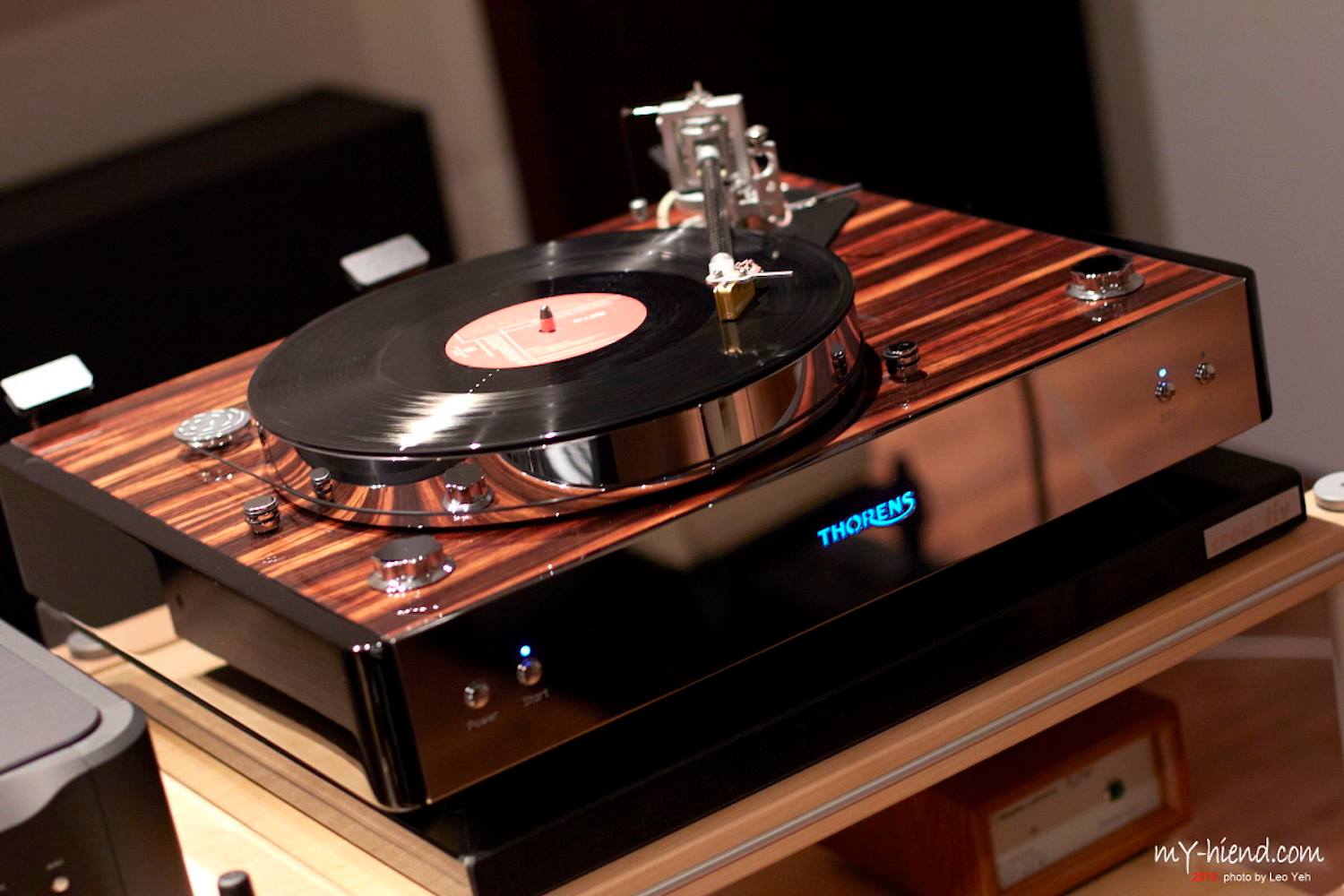
sound in the vinyl groove
